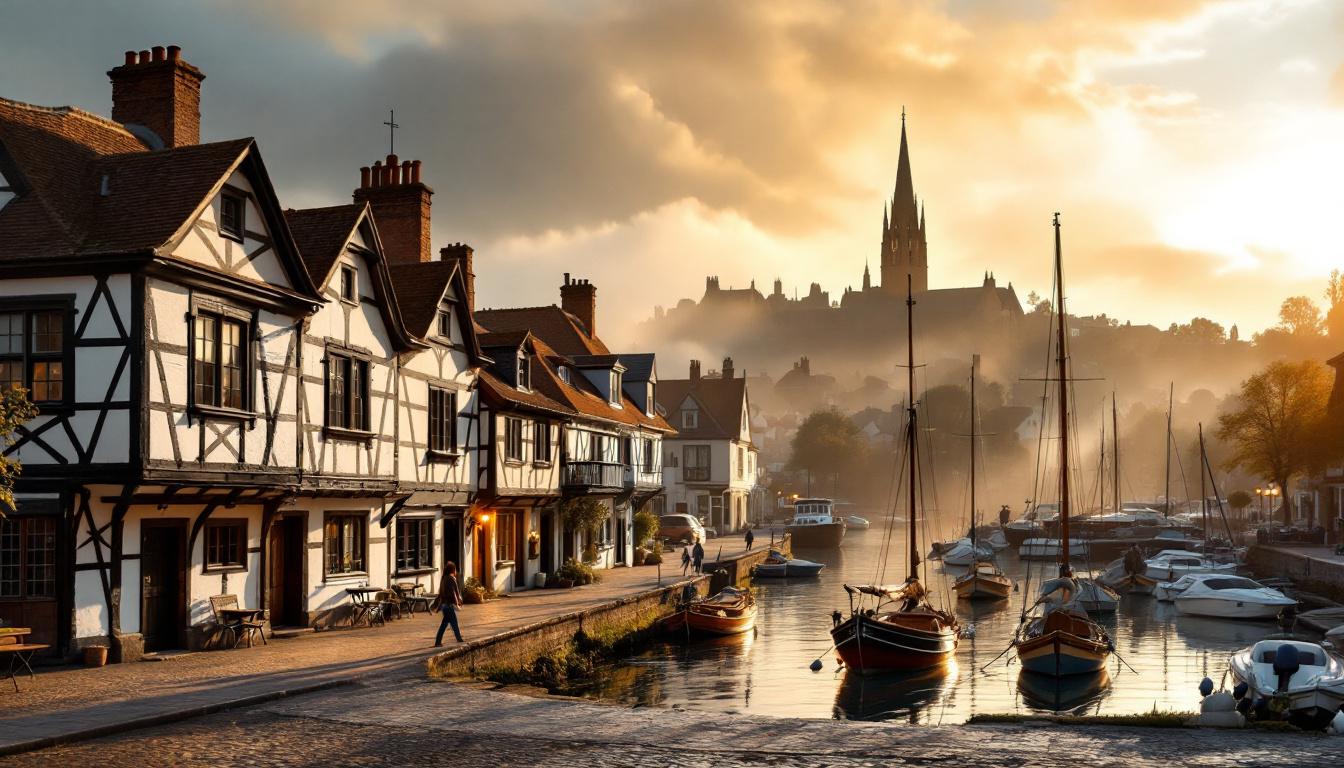France’s most spellbinding medieval port town sits hidden in Brittany’s westernmost embrace, where 16th-century timber-framed houses whisper tales of maritime glory. Le Faou might be tiny – barely 1,700 souls call it home – but this gem in Finistère’s crown packs more architectural punch than towns five times its size.
The last outpost before the end of the world
Perched at the northeastern edge of the wild Crozon Peninsula, Le Faou earned its name from the ancient Breton word “fav” meaning beech tree. In this region known as Finistère (“the end of the earth”), the village sits where the meandering River Aulne meets the Atlantic in a sheltered natural harbor that once bustled with merchant ships.
The village’s strategic position made it a crucial trading hub during the 16th and 17th centuries – a prosperity still visible in its remarkably preserved medieval center. Unlike some floating imperial cities elsewhere in Europe, Le Faou’s charm comes from its solidity and permanence.
Houses that tell stories in wood and slate
What immediately captivates visitors are the half-timbered houses lining the main square. With their black wooden beams creating geometric patterns against whitewashed walls, these structures represent Brittany’s most concentrated collection of timber-framed architecture.
“After 1561, building with timber was actually forbidden in Brittany due to devastating fires,” explains local historian Marie Kervarec. “That’s why these houses are so precious – they’re among the last of their kind in our region.”
Where sailors once traded salt for fortunes
The Place aux Foires (Fair Square) once echoed with the cries of merchants selling salt, wine, and textiles. Today, it remains the beating heart of Le Faou, where twice-weekly markets continue a tradition spanning five centuries.
When the tide rises, the harbor transforms dramatically. What appears as mudflats during low tide becomes a shimmering bay dotted with small boats – a spectacle worth timing your visit around.
A spiritual sanctuary of stone
The 16th-century Église Saint-Sauveur stands as testament to both faith and craftsmanship. Its decorative belltower rises above the village rooftops, while inside, medieval statues and an ornately carved baptismal font await the observant visitor.
Just a short drive from Le Faou lies the equally impressive Église Notre-Dame de Rumengol, whose tranquil setting makes it a favorite among contemplative travelers seeking respite from more thunderous natural attractions.
The forest that whispers secrets
Bordering Le Faou, the ancient Cranou Forest offers emerald-green trails winding beneath centuries-old oak and beech trees. While not as biologically diverse as some alpine botanical paradises, its serene pathways provide perfect morning walks before the village stirs.
A gateway to wild wonders
Le Faou serves as an ideal base for exploring the dramatic Crozon Peninsula with its rugged cliffs and hidden beaches. Unlike certain volcanic archipelagos that shaped evolutionary understanding, Brittany’s landscapes tell stories of erosion and endurance.
“Our village might be small, but it stands at the crossroads of Brittany’s most spectacular landscapes,” says local shopkeeper Yann Trellu. “The mountains, the sea, the forests – all meet here.”
Taste the tide
No visit would be complete without sampling local oysters, cultivated in the nutrient-rich waters where river meets ocean. Paired with traditional Breton cider, they offer a flavor experience you’ll find nowhere else.
Unlike high-altitude lakes with floating islands, Le Faou’s culinary treasures come directly from the Atlantic’s embrace, harvested by families who’ve worked these waters for generations.
In Le Faou, history isn’t confined to museums – it lives in every cobblestone, timber beam, and ocean tide. This Breton village doesn’t just preserve the past; it continues writing its story in granite and oak, salt water and cider, one visitor at a time.
